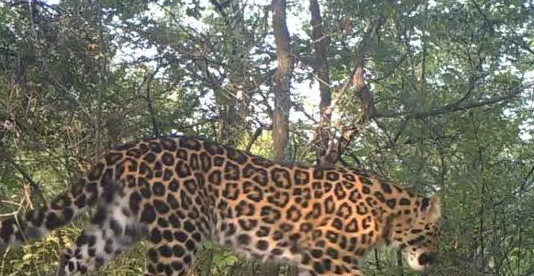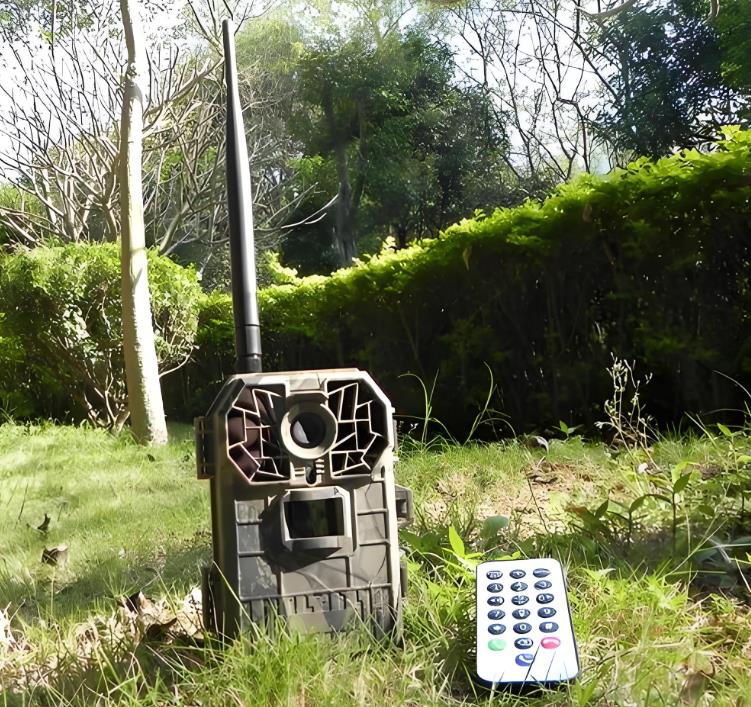According to Xinhua News Agency, on June 5, World Environment Day, the Northeast Tiger and Leopard Monitoring and Research Center of the State Forestry and Grassland Administration and the tiger and leopard research team of Beijing Normal University announced that according to the center's long-term monitoring, it is confirmed that there are important wild populations of North China leopards in the Ziwuling forest area of Shaanxi Province and the Taihang forest area of Shanxi Province. Among them, the largest wild population of North China leopards to date was found in the Ziwuling forest area of Yan'an.
On the evening of the 5th, Feng Limin, deputy director of the Northeast Tiger and Leopard Monitoring and Research Center of the State Forestry and Grassland Administration and associate professor of Beijing Normal University, told The Paper: "Through years of hard investigation, the survival status of the North China leopard, a leopard subspecies unique to China, in the wild has gradually become clear. We have found traces of the North China leopard in many forest areas in Shaanxi and Shanxi provinces. In particular, the population of North China leopards found in the Yan'an forest area is the largest wild population of North China leopards found so far. In the past year alone, we have photographed at least 28 North China leopards in the 800 square kilometers core survey area of the Ziwuling forest area in Yan'an, Shaanxi. This is also the area with a high density of leopards found in China. An important breeding population of North China leopards was also found in the Taihang forest area of Shanxi Province. Although leopards are large cats with a wide distribution in the world, the latest research shows that the global population and distribution area of leopards are showing a sharp decline, and the protection situation is very serious. The results of this survey are not only of great scientific significance for in-depth understanding of China's wild leopard population and distribution pattern, but also will have an important impact on the wild leopard protection pattern in China and even the world."

The "shadow" of the North China leopard. All information is provided by the Northeast Tiger and Leopard Monitoring and Research Center of the State Forestry and Grassland Administration.
On February 8, 2018, the Northeast Tiger and Leopard Monitoring and Research Center of the State Forestry and Grassland Administration was officially established at Beijing Normal University. After completing the population survey of Northeast tigers and Northeast leopards in China, the Northeast Tiger and Leopard Monitoring and Research Center of the State Forestry and Grassland Administration and the tiger and leopard research team of Beijing Normal University launched the assessment of the Chinese leopard population and began to promote and carry out the wild leopard population survey in other regions of China.
According to Feng Limin, the North China leopard is a national key protected wild animal. It is a leopard subspecies unique to China and a good species in the forest ecosystem of North China. Its population distribution and number, habitat, and genetic research have always lacked scientific and systematic research. In order to solve the mystery of the survival of the North China leopard in China, the National Natural Science Foundation of China has funded relevant surveys and scientific research on the North China leopard. At the same time, with the support of the State Forestry and Grassland Administration, Shaanxi Provincial Forestry Department and Shanxi Provincial Forestry Department, the tiger and leopard research team of Beijing Normal University formed a joint research team with local wildlife and nature reserve management departments and other units. From Taihang Mountains in Shanxi to Ziwuling Mountains in Shaanxi, a large-scale long-term positioning monitoring platform for biodiversity was established, and survey methods such as infrared-triggered camera networks were used to conduct scientific and systematic surveys on the population of the North China leopard, the most endangered wildlife in my country.

Feng Limin said that the results of many years of investigation are exciting. The North China leopard is currently a predator at the top of the food chain of the forest ecosystem in North China. Only when the ecosystem and food chain in which it lives are restored to a good condition can the effective reproduction and development of the North China leopard population be supported. The discovery of this important wild population of the North China leopard marks that the fragile ecosystems in North China, such as the Loess Plateau from Taihang Mountains to northern Shaanxi, have gradually become green and shaded by trees after years of protection and recuperation. The wildlife population and biodiversity are showing a clear recovery trend.
From the above news materials, we can know that the current projects on wildlife nature reserves are paying more and more attention to the animal ecosystem. As an ecological infrared night vision automatic monitor that can play a vital role, it has also attracted the attention of major social groups. Onick Optics is also very concerned about this. Onick ecological infrared night vision automatic monitors are also very popular in wildlife protection areas. The most prominent one is that Onick AM-999 ecological infrared night vision automatic monitor is a best-selling model in the Onick brand monitor series. It is divided into two versions, one with MMS version and the other without MMS version. One more choice, one more layer of application! Onick AM-999 (without MMS version) is an infrared sensor trigger camera with a 12-megapixel built-in 2-inch color display. It uses pyroelectric sensing technology for animals and human bodies to automatically shoot high-definition pictures and high-definition videos. The camera is in energy-saving state when no animal (human body) is detected, consuming only 300 microamperes of power, can be in alert state for a long time, and uses 8 No. 5 alkaline batteries for a long standby time of 32 months. Once an animal (human) enters the detection area, its camera function will be activated immediately (start-up time is 0.8-1 second) to take photos or videos. Each machine has its own infrared lighting. The special 940nm LED light can obtain high-definition black and white images or videos without emitting infrared light in the dark night, and take color photos or videos when there is enough light.

This model is super suitable for various nature reserves, agricultural and forestry science institutes, forestry bureaus and other units, wildlife protection and forest inspection, wetlands, university life science institutes and natural museums, animal and plant protection associations, animal surveys, forestry/scientific expeditions/animals/environmental ecological protection departments, animal and plant ecological photography enthusiasts to conduct animal ecology and behavioral activity research, track positioning tracking monitoring, plant timing photography and videography, animal and plant surveys, ecological monitoring, behavioral research or biodiversity surveys, etc. Field work needs, can also be used for anti-poaching and other actions, in addition to being used for mammals and ground-dwelling birds, it can also be used for amphibians, reptiles and cold-blooded animals.
Oonica Optics also hopes to contribute to environmental protection, forestry and other projects!


